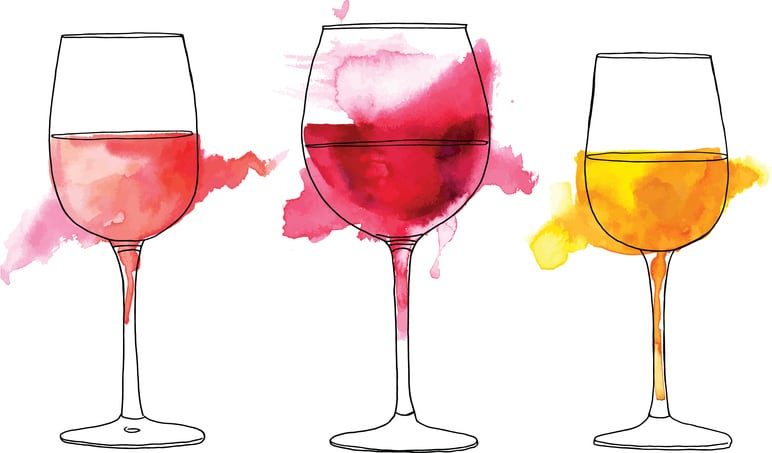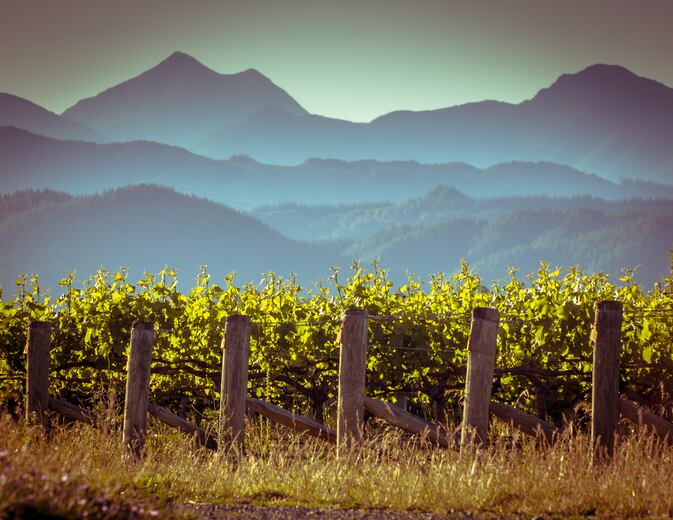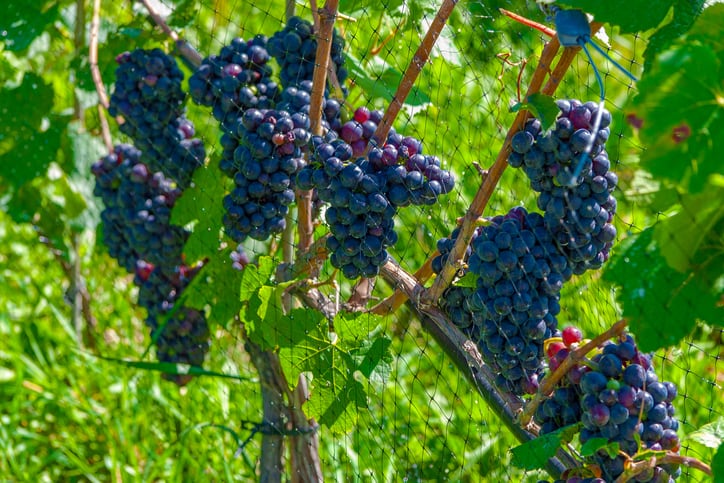Some of the opportunities for wine reflect broad trends across F&B - such as organic or Fairtrade - but others are specific to the wine category with complex and detailed certification. And while some categories have been around for some time, others - such as vegan or sulphite-free - are relative newcomers.
Top opportunity: Organic
Such is the potential of these niche markets that Wine Intelligence recently created its ‘SOLA [sustainable, organic, lower alcohol] opportunity index’ – a multi-category assessment of the alternative wines sector covering attributes such as Fairtrade, organic, sustainably-produced, carbon neutral, preservative-free, sulphite-free, vegan and biodynamic.
Organic wine ranks top of Wine Intelligence’s SOLA opportunity index, primarily due to the fact that ‘organic’ is generally the most recognised and best understood of the alternative wine terms. There’s strong awareness of the term, not only within the trade and with consumers, but also as a knock-on effect from neighboring F&B categories such as coffee and chocolate.
Globally, organic wine currently accounts for around 2.8% of sales. But the opportunity for organic wine varies greatly between markets.
The EU is by far the largest producer of organic wine, making up some 90% of global winegrowing organic area, and in this region organic production has been regulated since 1991.
With the number of winegrowing areas currently in conversion (it takes three years and four vintages to convert) it’s expected that the organic wine offering will further increase in the coming years.
France is one of the strongest organic wine producers, following on from a broad organic movement across all areas of F&B in the country. Here, organic vineyards make up 9% of total vineyard surface area.
Organic wine sales have seen average annual growth of 20% over the last seven years – and for many organic wine producers, their biggest challenge is keeping up with demand (more on the challenges and opportunities for French organic winemakers in the video on the right).
However, among the 11 markets it analysed, Wine Intelligence also sees particularly strong opportunity in Finland, Sweden and Germany, driven by strong retail objectives to increase the market share of organic wines.
The SOLA Wine Opportunity Index

Using three measures of ‘opportunity’, the SOLA index shows which alternative wines have the best opportunities.
These three areas of opportunity are: awareness (the percentage of people aware of the types of wine); purchase intent (the percentage of people who either seek to buy or would consider seeking to buy the wine type in the future) and affinity (the percentage of people who thing the wine type is right for them).
The top three areas of opportunity, according to the index, are organic, sustainably-produced wine, and Fairtrade wine. However, this varies by market – in the UK, for example, Fairtrade comes out on top; while in Japan it is preservative-free wine that offers the most opportunity.
Whether its organic, vegan, or biodynamic, “all the wines in the index are characterised by a combination of positive desires: to make more environmentally-responsible and sustainable wine, to give consumers a choice behind the mainstream and to cater to committed (and often vocal) minorities, such as vegans, who are seeking out products that fit their lifestyle choice,” explains Lulie Halstead, CEO, Wine Intelligence.
The 11 markets analysed by Wine Intelligence with its SOLA index are Australia, Canada, Finland, Germany, Ireland, Japan, New Zealand, Portugal, Sweden, the UK and US.
Responsibility goes beyond organic
While organic may be the top opportunity, sustainably-produced, Fairtrade and environmentally-friendly wine follow close behind, according to the index.
One reason that these broad, generic concepts currently to have the most traction with consumers could be that they are easy to understand (more specific terms such as orange wine, vegan wine and biodynamic wine come lower down the SOLA opportunity index).
Wine Intelligence says that accreditation and certification does help; although is not necessarily crucial when talking to consumers who have a well-meaning but vague intention of making responsible or sustainable purchases.
But Wine Intelligence also suggests that these broader terms could indicate consumers who want to be responsible across a broad range of criteria.
“Despite the complexity of certifying these SOLA categories, consumers report being drawn to wine that is produced ‘sustainably’ or ‘environmentally’, whether or not it comes with a consistent accreditation.
"This suggests that people have a growing intent to buy wines that are produced in a way that takes both the environment and those creating the product into consideration, and are willing to consider designations that are broader than just ‘organic’ as supporting cues.”
In 2014, the Sonoma County Winegrowers announced its goal to become America’s first 100% certified sustainable wine growing region by 2019. For a vineyard to become sustainable, growers must complete a self-assessment of each vineyard that includes a comprehensive set of 138 best practices, before undergoing an independent third-party audit.
Best management practices range from land use, canopy management, energy efficiency, water quality assessments, carbon emissions; healthcare and training for employees and being a good neighbor and community member.
Other wine growing regions have their own sustainability programs and projects: New Zealand, for example, has its Sustainable Winegrowing New Zealand (SWNZ) certification program run by New Zealand Winegrowers. In 2016, an impressive 98% of the country's vineyard producing area was SWNZ certified.

"Sustainability means delivering excellent wine to consumers in a way that enables the natural environment, the businesses and the communities involved, to thrive," says the organisation.
Key areas of focus are biodiversity, water, energy, people, pest and disease management, soil, air and business.
Elsewhere, the Wine Observatory on Sustainability is a project that aims to share and coordinate experiences, tools and best practices in the field of sustainable vitiviniculture. It hopes that it can spread the use of sustainability practices and, at the same time, promote a coherent and coordinated approach.
Fairtrade
Wine grape farming and wine-making are time-consuming, strenuous and labour-intensive industries. The demanding processes involved in the production of wine often lead to poor labour standards and living conditions for both small wine grape farmers and hired labourers on large plantations, according to the Fairtrade Foundation.
Its Fairtrade Standards were created to improve employment conditions and protect the rights of workers on wine grape plantations, as well as support small wine grape farmers’ organisations in gaining more control within supply chains and increase their incomes.
There are currently 42 Fairtrade wine producer organisations worldwide, across South Africa, Chile, Argentina and Lebanon, representing more than 5,000 farmers and workers.
South Africa is the largest producer of Fairtrade wine globally, with 24 producer organisations, and accounts for around two-thirds of Fairtrade wine sales. Chile also produces a high proportion of Fairtrade wine, with nine producer organisations in country.
More than 22.2 million litres of Fairtrade wine are sold globally every year. In the UK and Ireland, Fairtrade ranks highest in the SOLA opportunity index, with most major supermarkets and wine retailers selling a growing selection of Fairtrade wines.
Fairtrade ranks third highest overall in the SOLA opportunity index, after organic and sustainably-produced.
Do you know your organic from your biodynamic? Category definitions
Organic: broadly speaking, organic wine is wine produced from grapes that have been grown organically, often without the use of pesticides or other synthetic materials, and where the winemaking methods employed adhere to the rules and regulations of an organic certifying body. Precise definitions vary from market to market.
Biodynamic wine: an extended version of organic wine, first developed by Rudolph Steiner in the 1920s, stimulating health of the vine through homeopathic means so to avoid disease. Organic principles apply, as so some additional practices such as following the lunar calendar.
Natural wine: farmed organically and made without adding or removing anything in the cellar (or use of processing aids, heavy manipulation etc). Creates a ‘living wine’.
Orange and skin contact wine: white wines made in the same way as red wine, in that skins are not removed and left to ferment, often resulting in an orange hue.
Vegan wine: made without interaction from animal products (conventional wines may use fining agents such as isinglass and casein).
Sustainably-produced wine: generally considered to be produced in an environmentally-free manner (such as at a carbon-neutral winery or water and energy efficiency) or using grapes which have been grown with minimum chemical input and an effort to maintain the quality of the land. But there is no consistent definition.
Environmentally-friendly wine: no definition or certification, but centers around the concept of ‘green’ products.
Fairtrade wine: products certified by Fairtrade International, an organisation that promotes products that meet social, economic and environmental standards set by the foundation, including protection of workers’ rights and environment.
Sulphite-free wine: The legal definition for sulphite-free wine under both EU and USA law is a wine containing no more than 10 parts per million total sulphites and 5 parts per million free sulphites. Wine with an excess of 10mg/l must state it “contains sulphites” on the label. All wines contain some level of sulphites, as sulphur is a natural by-product from the fermentation process.
Preservative-free wine: typically refers to no added sulphites
Images (top to bottom): getty/tenmay; getty/platersca; getty/creativenl.

